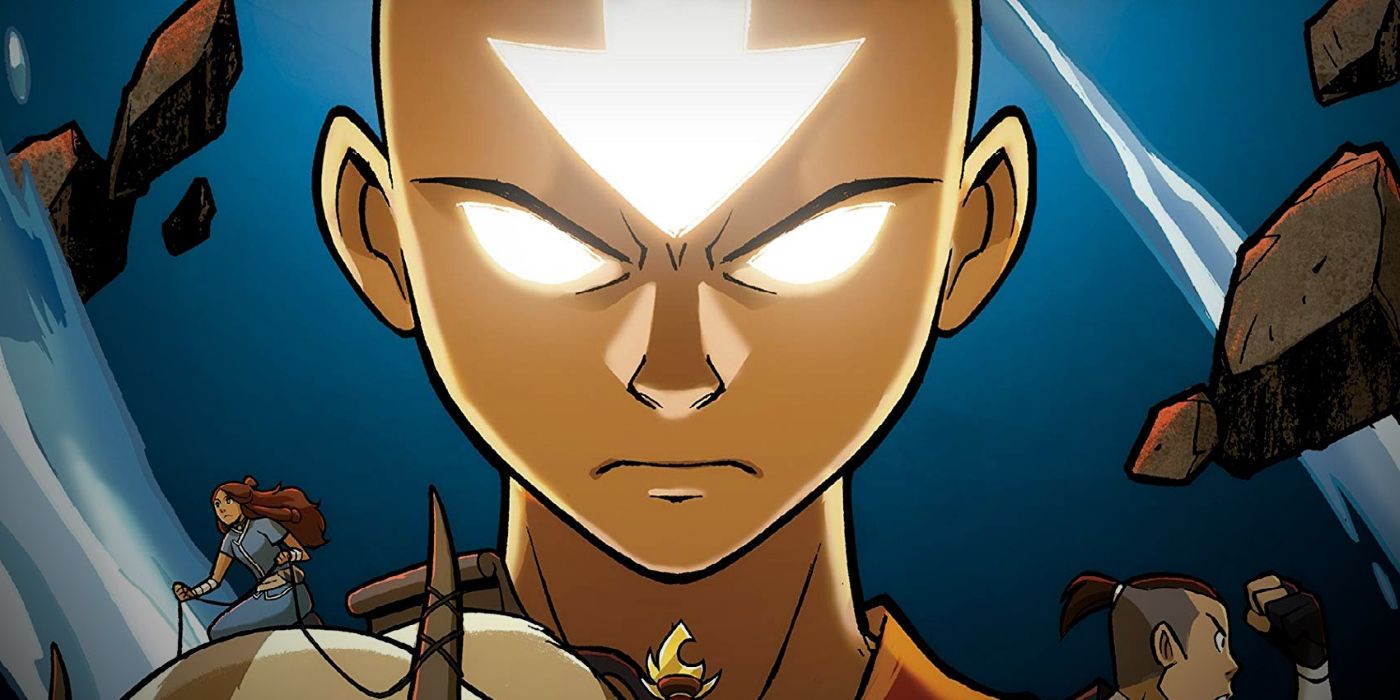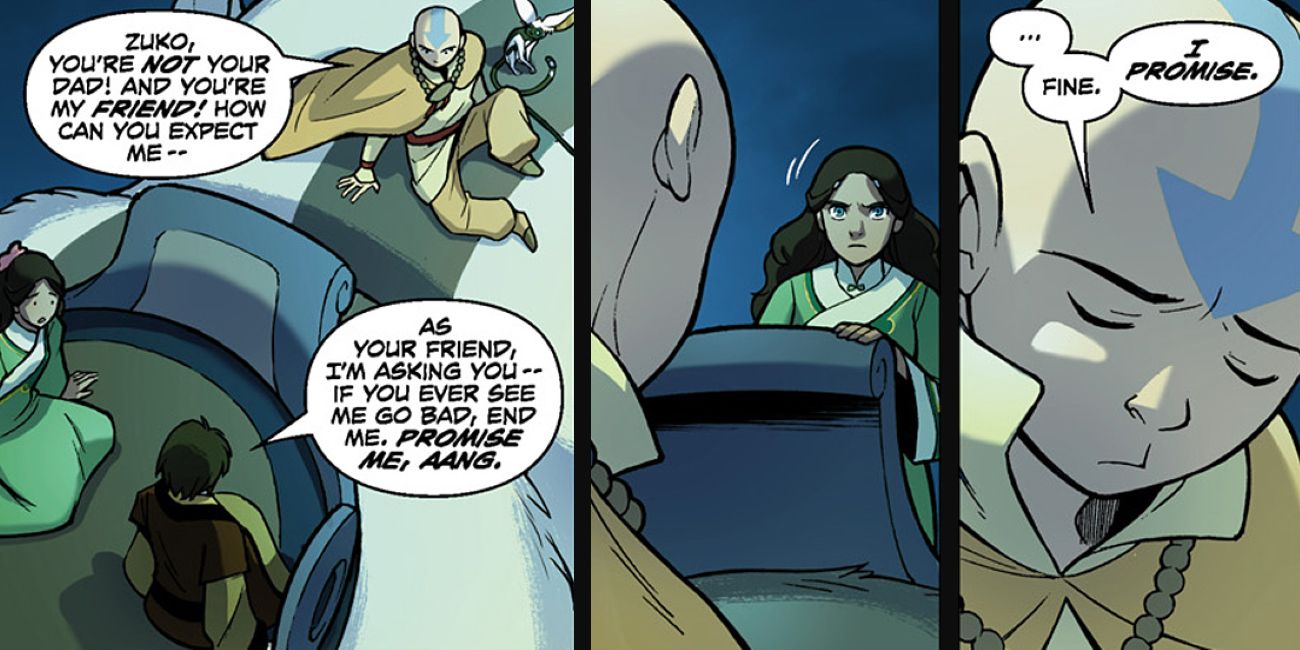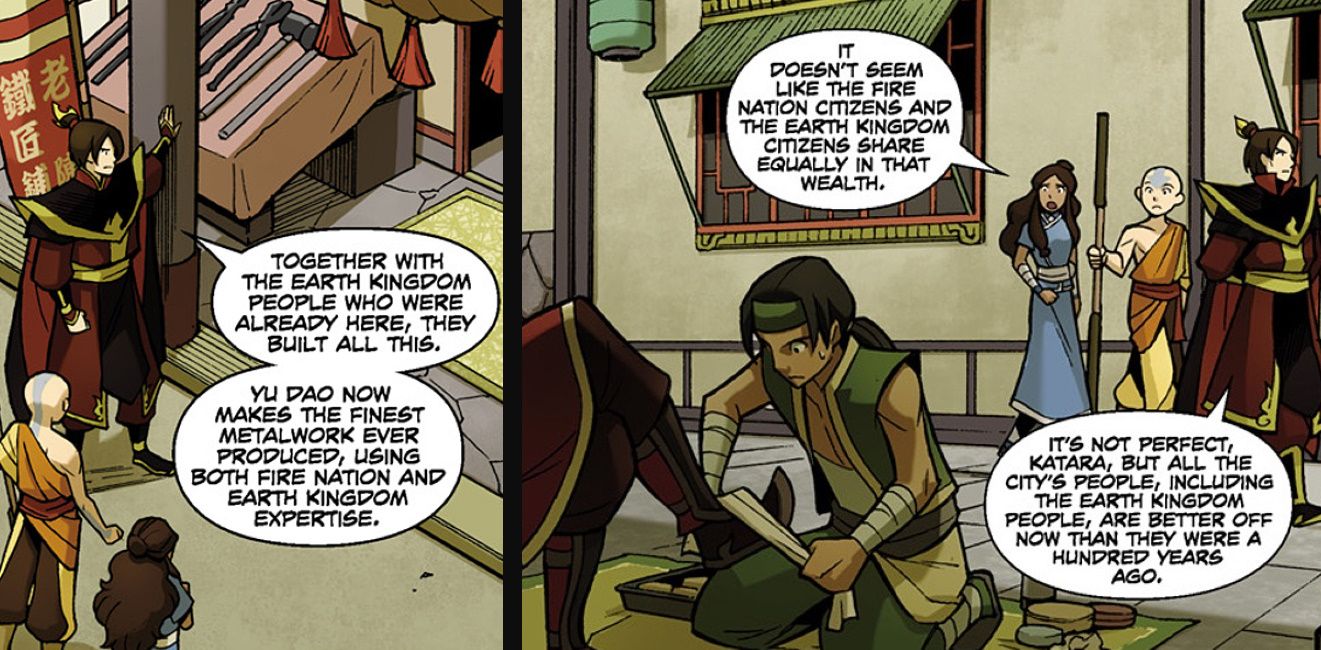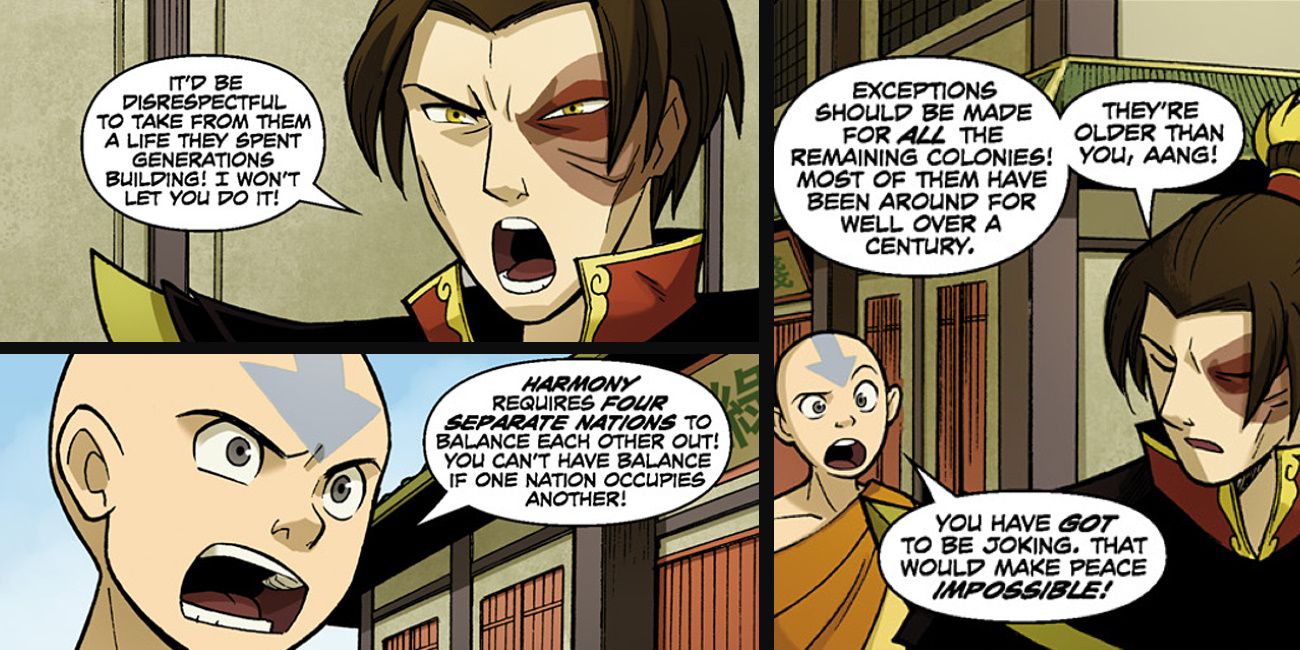The fifteenth anniversary is a time to celebrate Avatar: The Last Airbender and its climactic finale, as the heroic Aang defeated the dark Fire Lord Ozai. But even fans may not know that wasn't actually the end for Aang and the gang's adventures. And to call it a 'happy ending' is ignoring the real, only-for-adults conclusion of Aang's mission.
As many will point out, The Legend of Korra continues the story of the Avatar world -- but it only begins decades later, after even Aang has passed away. The story of Aang is told not in animation, but in a series of comics that pick up directly following the TV series. In fact, the first issue actually picks up in the midst of the final episode. Seeing The Last Airbender's big, bad villain defeated certainly fits the formula of a "happily ever after" conclusion. But the show is too smart to let the heroes off that easily. After the defeat of a great evil, there is still damage left to be undone. And in the six -- yes, SIX comic trilogies that follow, Aang's responsibility to maintain peace offers the true conclusion of the story. One that the show's young fans probably weren't ready to understand.
The first graphic novel to continue the story arrives in Avatar: The Last Airbender - The Promise, written by Gene Luen Yang (New Super-Man, American Born Chinese) with series creators Michael Dante DiMartino and Bryan Konietzko, and art by Gurihiru. As mentioned above, the story begins during the end of the last episode of the series, showing the crew celebrating the defeat of the Fire Lord, and and end to one hundred years of tyranny. Together the group decides to help enact the "Peace Restoration Movement," to restore harmony to the world by having the Fire Nation withdraw from the other realms, and return to their country of origin. And that decision is where things start to get... heavy.
Zuko Asks Aang To Kill Him if He Turns Evil
Having finally faced his father's evil, Zuko asks Aang to make him a promise: that he will agree to kill him, if he ever begins to act like his father. From there, the story flashes forward a year to reveal that Zuko (now Fire Lord) is pulling out of the peace treaty... leaving Aang to worry that he might have to fulfill the promise he never actually wanted to make. Having not even been able to kill Ozai, and learning a whole new skill to spare his life by removing bending powers, the idea of having to actually kill his own friend is as unwelcome as fans would assume.
Aang heads to a Fire Nation colony located in the Earth Nation to meet Zuko face to face, and after a typically impressive Airbender fight scene breaks out, Katara defuses the situation. It's here that the 'good vs evil' themes drop away, as Zuko reveals he no longer supports the peace treaty... because he is no longer sure if it's the right thing to do. While Zuko came to the village to force the Fire Nation citizens to withdraw, Zuko realizes that firebenders and earthbenders are now living together. Despite their ethnicity being tied to the Fire Nation, many of these families have been in the colonies their whole lives. It makes sense, since a war spanning over a century means most Fire Nation colonists were born, raised, and put down roots of their own in the area. It might not have been their home when they first arrived, but the people sharing the land have made a new world of their own.
Aang Faces The Hard Truths of Colonialism
Unfortunately, even this compromise and progress isn't as simple or 'happy' as it seems, either. The gang walks through the village and sees how earthbenders and metalbenders have come together to do things that could never be done on their own. But the reality of the Fire Nation's invasion means years of war have left the power of the community unfairly leaning towards Fire Nation families. This leaves the gang, like Zuko, facing a problem with no easy answer. Handled improperly, the world remain teetering on the edge of a renewed war drawn along the same old lines.
If the Fire Nation colonists don't leave as promised, revolt could break out and a new war may erupt. But forcing the treaty upon colonists would be unjust to firebenders that know these colonies as their home. Despite being an embodiment of all nations and benders in harmony, Avatar Aang is completely unsure of how peace is ever meant to work, if the benders don't separate back to their own nations. Ironically, making Zuko the more empathetic character as a result. The team is left to figure out an impossible, but realistic dilemma. On one side, there is freedom people have waited a century to be granted. On the other, a group of equally innocent families that must now be forced from their homes, due to atrocities of their ancestors.
Avatar's Real Ending Shows... Peace Never Comes
Although The Last Airbender dealt with tragedy and sadness, a series marketed mainly to children isn't expected to deal with something as painful, political, or unsolvable as the racial, social, and moral realities of invasion, occupation, and war. The Aang gang spent years to free the world from the tyranny of Ozai. But now that they are in charge, they must deal with the complicated issues left behind. Colonization, its effects, and immigration all become major themes of the graphic novels, leaving Aang with decisions to be made that are far less black and white than training and defeating the villain.
It is now Aang and his treaty of peace that are ripping families apart, while Zuko is the sympathetic champion of the little people trampled by diplomacy. Rather than basing a conflict on a central source of evil, it's derives from the result of their own triumph -- truly showing why the Avatar is such a necessary, never-ending chain of being. Just as peace is always changing and evolving with the times, so too must the Avatar. Perhaps that's an ending viewers are best left to understand once they're ready.




